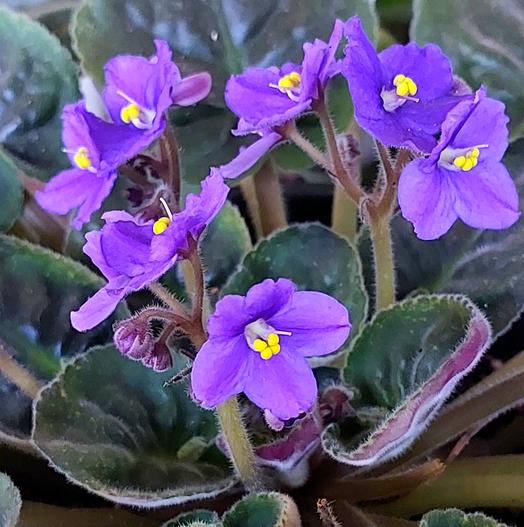Cape Primrose
(Streptocarpus ionanthus)
Cape Primrose (Streptocarpus ionanthus)
/
/

Chandralekha CT
CC BY-SA 4.0
Image By:
Chandralekha CT
Recorded By:
Copyright:
CC BY-SA 4.0
Copyright Notice:
Photo by: Chandralekha CT | License Type: CC BY-SA 4.0 | License URL: https://creativecommons.org/licenses/by-sa/4.0 | Uploader: Shagil Kannur | Publisher: Wikipedia Commons




Estimated Native Range
Summary
Streptocarpus ionanthus, commonly known as Cape Primrose, is a deciduous perennial herb native to the forest floors and shaded riverbanks of Tanzania. It typically grows to a height and width of 0.5-0.8 feet (0.15-0.25 meters), forming a low, compact rosette of leaves. The plant is characterized by its velvety, deep green leaves and its tubular flowers, which come in shades of blue, pink, purple, and white. The flowers are quite showy and can bloom throughout the year in the right conditions, with peaks in the spring and summer months.
Cape Primrose is valued for its continuous flowering habit and its ability to thrive in low-light conditions, making it an excellent choice for indoor cultivation or shaded garden areas. It is often used as a houseplant or in terrariums due to its modest size and attractive foliage. In cultivation, it requires consistent moisture but is sensitive to overwatering, so well-draining soil is essential. It prefers part shade to full shade and benefits from high humidity environments. While it is generally easy to maintain, it can be susceptible to root rot if overwatered and may attract pests such as aphids and mealybugs. Propagation is commonly done through leaf cuttings, which root easily in moist soil or water.CC BY-SA 4.0
Cape Primrose is valued for its continuous flowering habit and its ability to thrive in low-light conditions, making it an excellent choice for indoor cultivation or shaded garden areas. It is often used as a houseplant or in terrariums due to its modest size and attractive foliage. In cultivation, it requires consistent moisture but is sensitive to overwatering, so well-draining soil is essential. It prefers part shade to full shade and benefits from high humidity environments. While it is generally easy to maintain, it can be susceptible to root rot if overwatered and may attract pests such as aphids and mealybugs. Propagation is commonly done through leaf cuttings, which root easily in moist soil or water.CC BY-SA 4.0
Plant Description
- Plant Type: Herb
- Height: 0.5-0.8 feet
- Width: 0.5-0.8 feet
- Growth Rate: Moderate
- Flower Color: Purple
- Flowering Season: Spring, Summer, Fall, Winter
- Leaf Retention: Evergreen
Growth Requirements
- Sun: Part Shade, Full Shade
- Water: Medium
- Drainage: Medium, Fast
Common Uses
Low Maintenance, Potted Plant, Showy Flowers
Natural Habitat
Forest floors and shaded riverbanks of Tanzania
Other Names
Common Names:
Scientific Names: , Streptocarpus ionanthus, Saintpaulia amaniensis, Saintpaulia pendula var. kizarii,
GBIF Accepted Name: Streptocarpus ionanthus (H.Wendl.) Christenh.